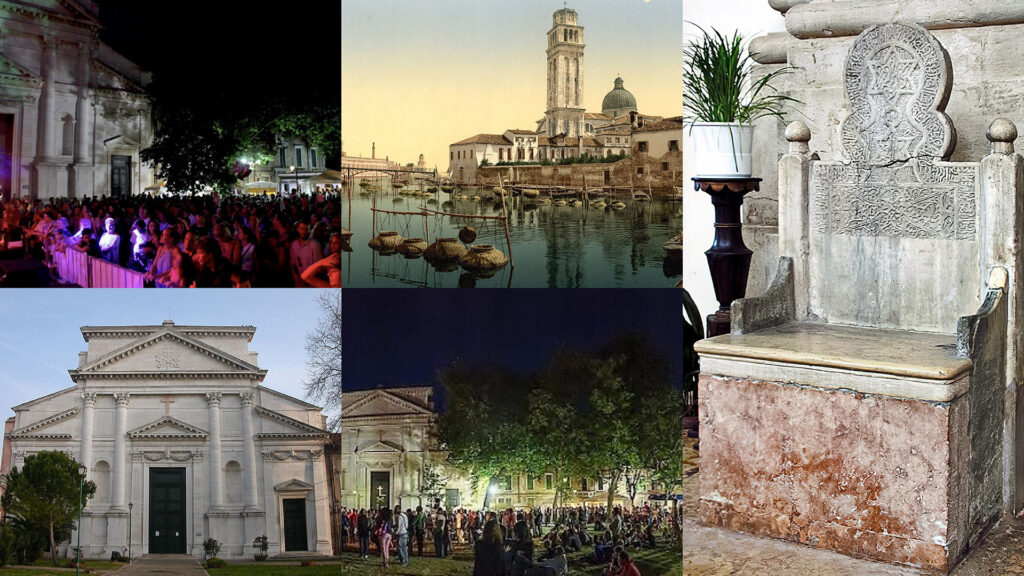
From 29 to 3 July, one of the unmissable events of the Venetian summer, the Sagra di San Pietro di Castello.
The island of Olivolo, on the eastern part of Venice, is one of the earliest extant settlements of the city, together with Rialto and Torcello. Today, the islet is known as San Pietro di Castello. A long wooden bridge, built as late as in the nineteenth century, spans over the San Pietro Canal, and offers a beautiful view on the majestic white façade of the Basilica, named after Saint Peter. The church lies in lush greenery over the darker greenish waters around the islet. The earliest testimonies of its existence date back to the seventh century, and we know it was dedicated to Saint Peter in the ninth century. In 1451, it was chosen as head church of the Venice Patriarchy, later Cathedral until 1807. Renovate multiple times, the current façade is attributed to Palladio, maybe his first commission in Venice, though an unfinished one. We can still appreciate Palladio’s style, which is faithfully adhered to.
The current form of the sacred building maintains the monumental façade, while the interior we see today was built in the seventeenth century. The plaza in front of the church is dominated by the belltower designed by Marco Codussi (1490), clad in Istria stone (a limestone derivative that is seen all around Venice). The Basilica is also the protagonist of an early summer appointment that Venetians and mainlanders wouldn’t dare miss: the San Piero (sic) Fete, traditionally a religious festival to honour Saint Peter, though now also a chance to celebrate the beginning of summer with a social rite where gastronomy plays a major role, as one would guess. Pasta fazool, sardine sauce spaghetti, mussels, fish fry, ribs, sausage… generously seasoned with live music, dance, games, and a raffle. On Sunday, the boat cortege leaves the San Giuseppe Canal to land in San Pietro.
Over the centuries, Venice has always kept a fair distance between Church and State: religion is certainly an element of connotation of the great local celebration, though with a strong civic sentiment built into it. The San Pietro di Castello Festival is produced by the committee of the same name and volunteers, by religious and civil authorities, and the essential contributions of sponsors.